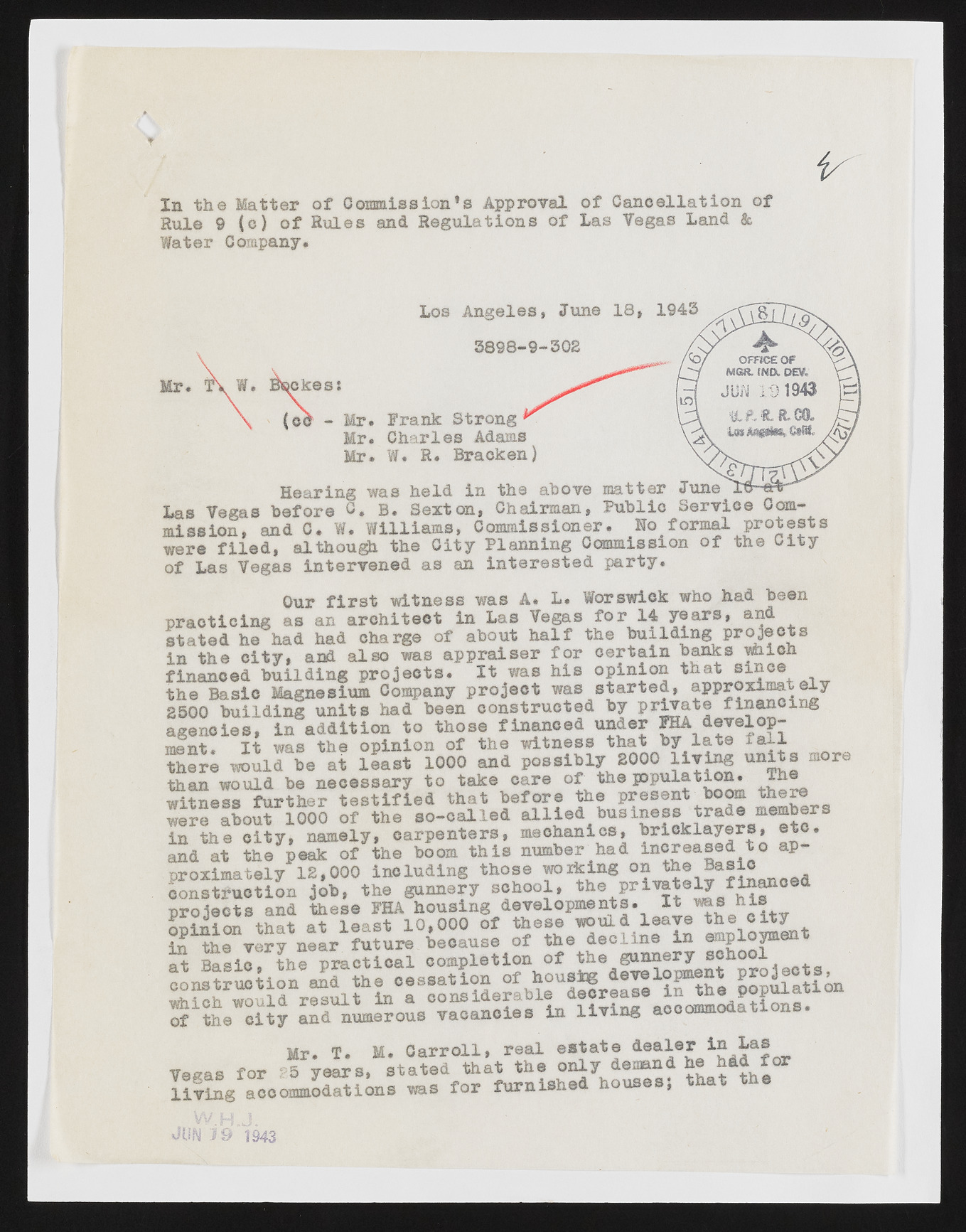Copyright & Fair-use Agreement
UNLV Special Collections provides copies of materials to facilitate private study, scholarship, or research. Material not in the public domain may be used according to fair use of copyrighted materials as defined by copyright law. Please cite us.
Please note that UNLV may not own the copyright to these materials and cannot provide permission to publish or distribute materials when UNLV is not the copyright holder. The user is solely responsible for determining the copyright status of materials and obtaining permission to use material from the copyright holder and for determining whether any permissions relating to any other rights are necessary for the intended use, and for obtaining all required permissions beyond that allowed by fair use.
Read more about our reproduction and use policy.
I agree.Information
Digital ID
Permalink
Details
More Info
Rights
Digital Provenance
Publisher
Transcription
n In the Matter of Oonmission’s Approval of Cancellation of Rule 9 (c) of Rules and Regulations of Las Vegas Land & Water Company. Los Angeles, June 18 3898-9-302 Mr. B^ckes: (o^ - Mr. Frank Strong Mr. Charles Adams W. R. Bracken) Hearing was held in the above matter June Las Vegas before 0. B. Sexton, Chairman, Public Service Commission, and C. W. Williams, Commissioner. No formal protests were filed, although the City Planning Commission of the City of Las Vegas intervened as an interested party. Our first witness was A. L* Worswiek who had been practicing as an architect in Las Vegas for 14 years, and stated he had had charge of about half the building projects in the city, and also was appraiser for certain banks wiicn financed building projects. It was his opinion that since the Basic Magnesium Company project was sJarteJ> apP£jximatet±7 2500 building units had been constructed by private finan ing agencies, in addition to those financed under fEA ment. It was the opinion of the witness that by late fall there would be at least 1000 and possibly 2000 living units more than would be necessary to take care of the population. The witness further testified that before the present boom there were about 1000 of the so-called allied b u s i e s trade members in the city, namely, carpenters, mechanics, bricklayers, etc. and at the peak of the boom this number had increased to approximately 12,000 including those working on the Basic construction job, the gunnery school, theprivatelyfinanced projects and these FHA housing developments. It was his opinion that at least 10,000 of these would leave the city S m e very near future because of the decline in employment it aStil the practical completion of cessation of hous itnhge degvuenlnoeprmye nstc hoporlojects, whi?h would result in a considerable decrease in the population of the city and numerous vacancies in living accommodations. Mr. T. M. Oarroll, real estate * « ! • * * * j**nt* Ve«as for ?5 years, stated that the only demand he hid for S f S g accommodatiins was for furnished houses; that the J U N 1 9 1 9 4 3

